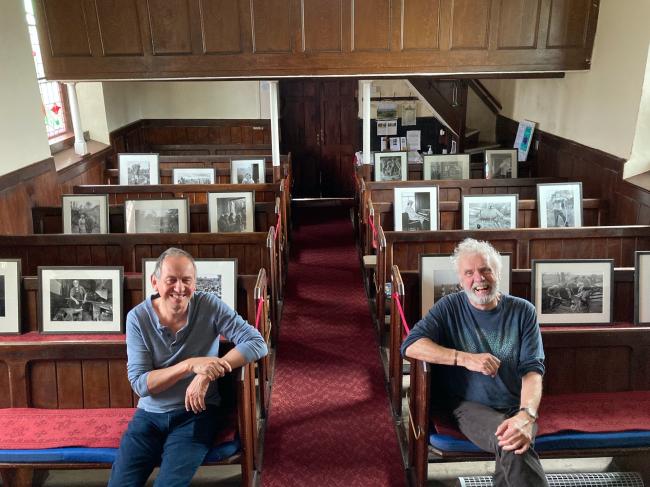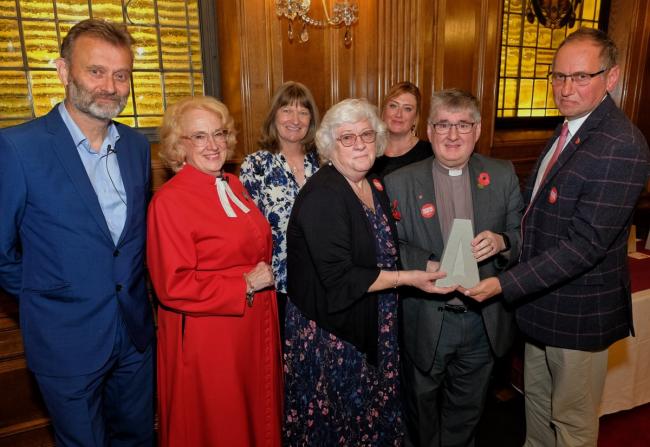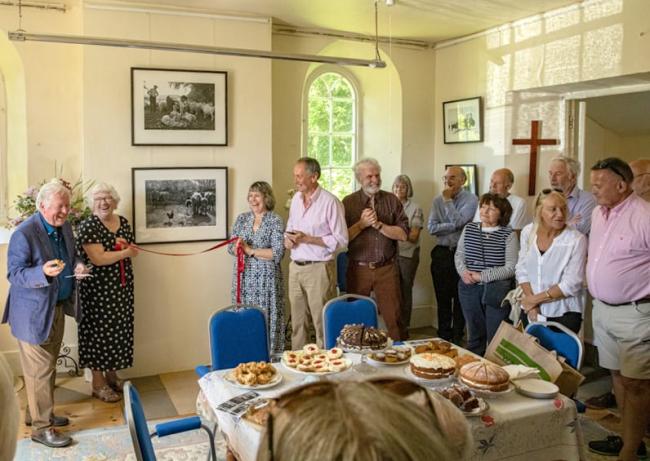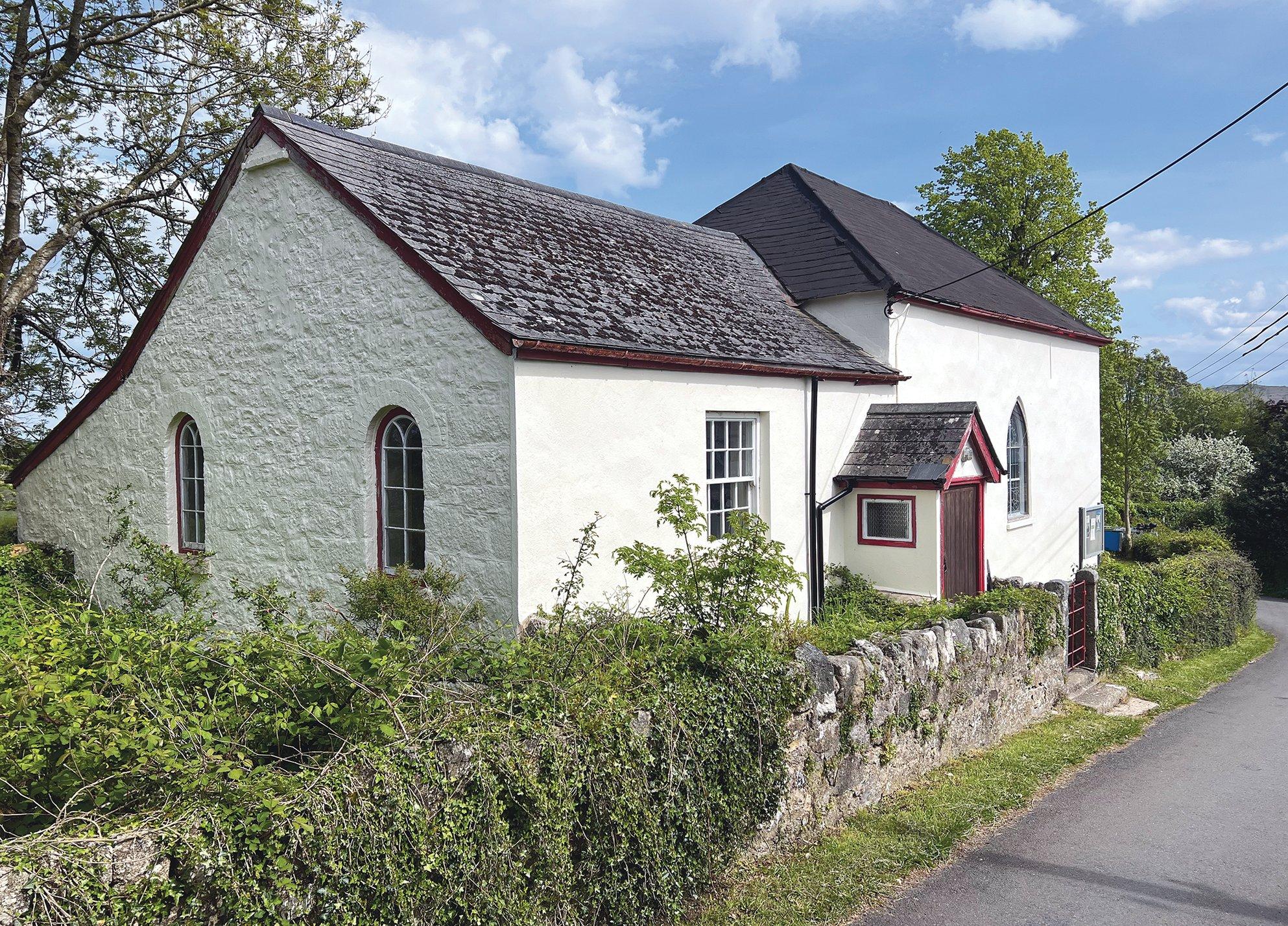Rural churches, chapels and meeting houses face a very different reality to their urban counterparts. With smaller – and often shrinking – populations around them, welcoming people inside can often be a big challenge. Throwleigh Providence Chapel, on the edge of Dartmoor, was on the brink of closure when the team decided that change was needed. After starting out small, they’ve gone from strength to strength, bringing in thousands of visitors in recent years and developing bonds within the community.
A struggling chapel
“The chapel has always been at the heart of the community,” explains Ian Crawford, a church member, “but in the years leading up to Covid, it was really struggling.
“Attendances were very low, and it was seemingly apparent to the hierarchy of the Methodist Church that unless something changed, the chapel would close.”
One change that the members took was to reduce the number of services, from weekly to monthly.
“It was a brave decision, but gave people an opportunity to come together, and attendances slowly rose,” says Ian.
“Part of the reason is that we have lots of big farming families here. For them, it’s not always possible to make a service – if they have one day of good weather to harvest, for example.”
Turning ideas into a reality
“It was a good group of people, but the chapel needed something more. People were talking about things to do. We decided to do tea on a Saturday afternoon. So, I spoke to the Local Archive [historical records about the area] and got them to lend me some of their collection,” shares Ian.
The tea was an instant success and quickly became a regular part of the calendar.
As Ian explains, “we got a great response from putting these teas on. There were so many more people than I expected, and it grew.
“It was obvious that people had an interest. A lot of people, because of the lack of activity, had thought that the place was closed. They actually drove past it on a regular basis. Because the doors were always shut, they assumed it was closed. So, we also took the decision to begin keeping the doors open.”
Around the same time as this, the chapel was asked to take part in The Archangel’s Way.
“It’s a pilgrimage route that was designed by some of the local vicars to go from Brent Tor across the north of Dartmoor and down to Chagford. We got included in the route, partly because we have toilets outside,” says Ian.
“The success of that gave us the idea to put in new toilets and a kitchen. That hasn’t happened yet, but the success definitely encouraged us to make the building more available to the local community.
“We put teabags out, with water, sugar, biscuits, coffee. We made a little book and charged £3 for it, which helped us to cover some of the costs. It encourages people to spend a moment in this quiet place, and they also passed the word on.”
Bouncing back after the Covid-19 pandemic
Just as momentum was building around the chapel’s new activities, the world was struck by the Covid-19 pandemic and lockdowns took hold.
The chapel had to be closed during this time, but the team showed great resilience and energy to hit the ground running once things began to return to normal.
A major step they took was to create an exhibition featuring the work of local photographer Chris Chapman.

“It’s about the real Dartmoor, not the one you see on TV. It’s about real people. Whether they’re buried in the graveyards or working in the fields, owners of local businesses or the people who organise local events, this is real," shares Ian.
“Originally, we thought we’d have a one-year exhibition. Fortunately, we had a man called Simon Timms help us. He said ‘we can’t just put the photos up. We need to do this properly’. He helped us apply to The National Lottery Heritage Fund and we were successful. They enthused about the application, because they could see we were aiming to build a connection between the chapel and the community.”
Once the exhibition had been set up, it quickly became a success. Locals became regular visitors, and word of mouth helped with promotion.
Ian explains: “The photographs have done something that we’d never thought they’d do. They have brought people together and created conversation. It has brought Providence Chapel back to life, in some ways. In the first year [of the exhibition] we had over 2000 people come through the doors."
The chapel also achieved recognition in 2023 when it won a national tourism award at our National Church Awards.

Funders want to help you
The team at Providence Chapel are also keen to pass on their experience to help encourage other places of worship to open up.
“Don’t be afraid” is Ian’s first piece of advice.
Getting external funding can be daunting, but do not let that stop you from approaching funders.
“It’s very easy to be afraid of failing,” Ian shares.
“But The National Lottery Heritage Fund and other funders, they want to help. If you can demonstrate that you are genuine about your commitment to the community, then people are there to support you.
“We’ve now got organisations who have said 'We like what you’re doing. You must come back to us [for funding] when you get to the next level.’”
That doesn’t mean that the process is easy, though. There is a lot of work involved: keeping your core purpose in mind and consulting local people are key.
“There are pitfalls,” shares Ian.
“If you try something too big, it won’t necessarily work, and you sometimes get ruled by the money. Doing it the way we’ve done it, it’s built up. We tried something and then added this and added that. If we hadn’t done these first – these things that have brought people together – I don’t think we’d do any of the refurbishment or adding facilities.”
If you’re approaching the project in the right way, you don't necessarily need big ideas or resources to make it a success.
“You don’t have to have a grand idea,” explains Ian.
“Sit down as a group of people and say ‘what have we got?’ Then all you need is a welcome sign, open the doors, put events on, and publicise it.
“If there are other churches out there, who want to follow a similar path and want to hear about our experience, we’re always very happy to have a conversation.”

Building on success
There’s no sign of the Chapel resting on its laurels, despite the success of the exhibition.
“It has been a success,” says Ian.
“But we’re not sitting back. It would be very easy to do that. But we want to revamp the exhibition, and we’ve taken the decision to move forward with refurbishing the building. We are going to make the building even more available to the local community by installing new facilities.”
At this small chapel in Dartmoor, a true sense of community has helped to create a thriving environment. Thanks to a brave and pioneering approach, as well as relentless energy and commitment to the area, the chapel has gone from the brink of closure to becoming a popular tourist destination, with people coming from across the UK to visit. This innovative approach has even inspired St Paul's Cathedral in London, who are looking at trying out something similar in the future.
With a simple plan and limited resources, the team have made a success of things by keeping their community in mind and working for the benefit of everyone.
For Churches: Top tips for your place of worship
- Involve your local community. You don’t need to pursue grand plans to find success. Think about what you have available and ask local people what they’d like to see. By starting out small, you can build on successes, learn as you go along and see what visitors and your local community want to engage with.
- Don’t be afraid. Starting out on any project is daunting, but you don't need everything to be perfect to start with; don't let perceived obstacles that are out of your control stop you from trying.
- Make use of support that’s available. Remember that grant funders and other organisations are on hand to help. They want to fund and support projects, so give them a reason to support yours. We have a tourism toolkit that can help you get started on how you can attract visitors.
- Promote your church. Make sure people know where your church is and that it is open. Consider putting a welcome side outside the building. Remember too that you can list your church on our Explore churches map on our website, which can help to attract visitors from near and far.

